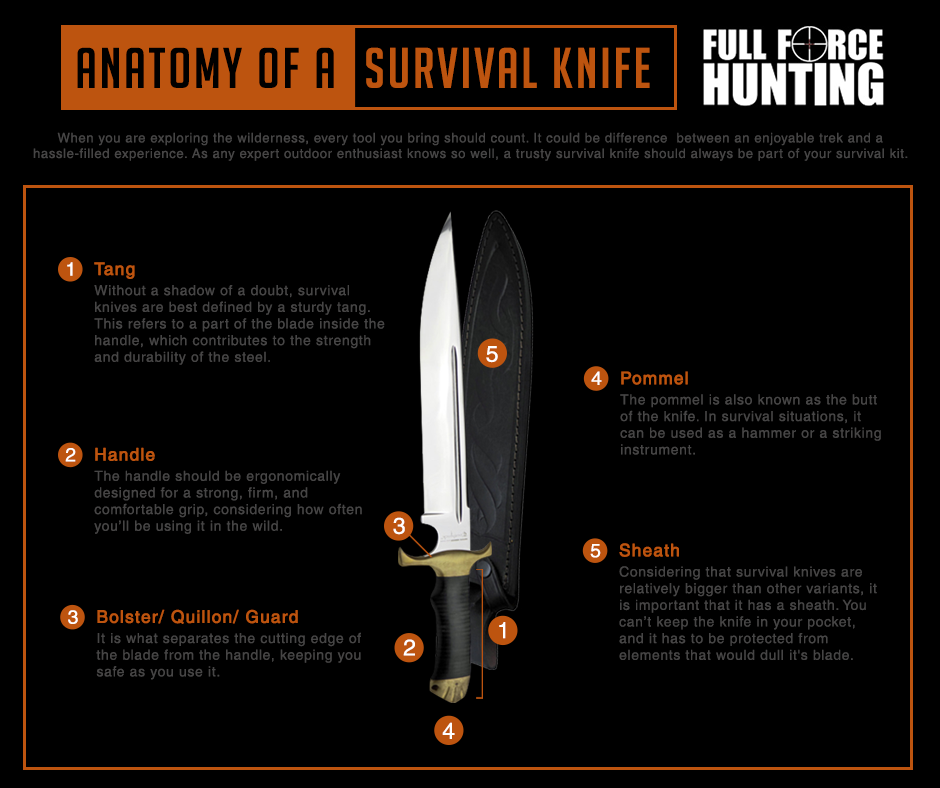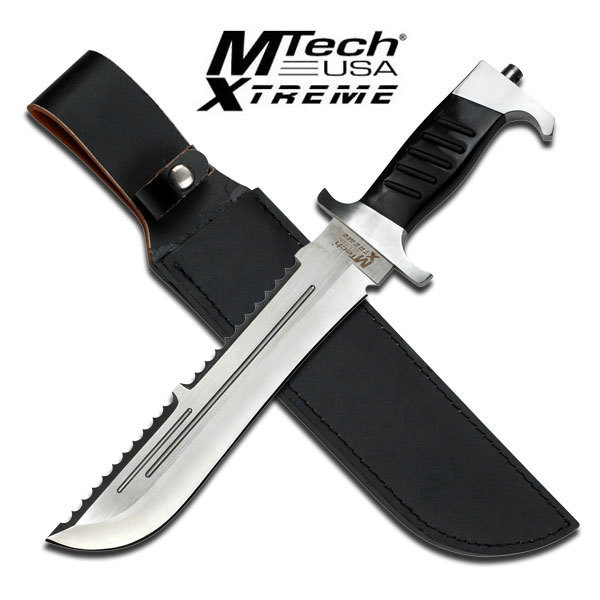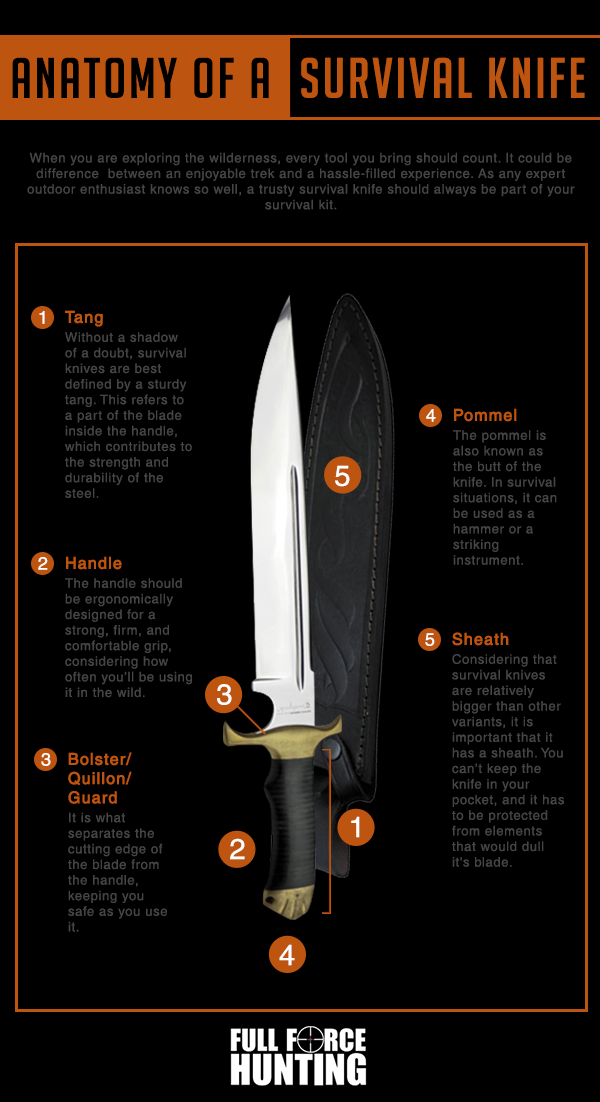Anatomy of a Survival Knife

When you are exploring the wilderness, every tool you bring should count. It could be difference between an enjoyable trek and a hassle-filled experience. As any expert outdoor enthusiast knows so well, a trusty survival knife should always be part of your survival kit.
What’s a survival knife, you ask? In a nutshell, you can define it as a tool which is almost as versatile as a Swiss-Army knife. But the biggest difference is its strength, because you’ll be using it for various tasks like cutting ropes or chopping wood.
Without further ado, let’s look into the parts of a standard survival knife.
Survival Knife Anatomy: The Essential Elements
Many people would argue what truly is the standard of a survival knife, from length and blade characteristics. But below are some elements that most will agree with.
1. Tang
Without a shadow of a doubt, survival knives are best defined by a sturdy tang. This refers to a part of the blade inside the handle, which contributes to the strength and durability of the steel. Despite the many styles, one thing is the same for all - it makes it ideal for blunt force.
2. Handle
This is probably one of the most intricate parts of a survival knife. The handle should be ergonomically designed for a strong, firm, and comfortable grip, considering how often you’ll be using it in the wild. Determining the best handle might require a bit of experience actually using it.
3. Bolster/ Quillon/ Guard
Australian hunters among others know that when purchasing a survival knife, you do not want to be cut by your own tool. This is why the bolster, quillon, or guard, is important. It is what separates the cutting edge of the blade from the handle, keeping you safe as you use it.
4. Pommel
The pommel is also known as the butt of the knife. In survival situations, it can be used as a hammer or a striking instrument. Even if its use is limited, its presence is something that most hunters and outdoor enthusiasts look at and examine.
5. Sheath
Considering that survival knives are relatively bigger than other variants, it is important that it has a sheath. You can’t keep the knife in your pocket, and it has to be protected from elements that would dull it's blade.
A true wilderness aficionado would never go out without a survival knife. And these are the traits you should always remember.


